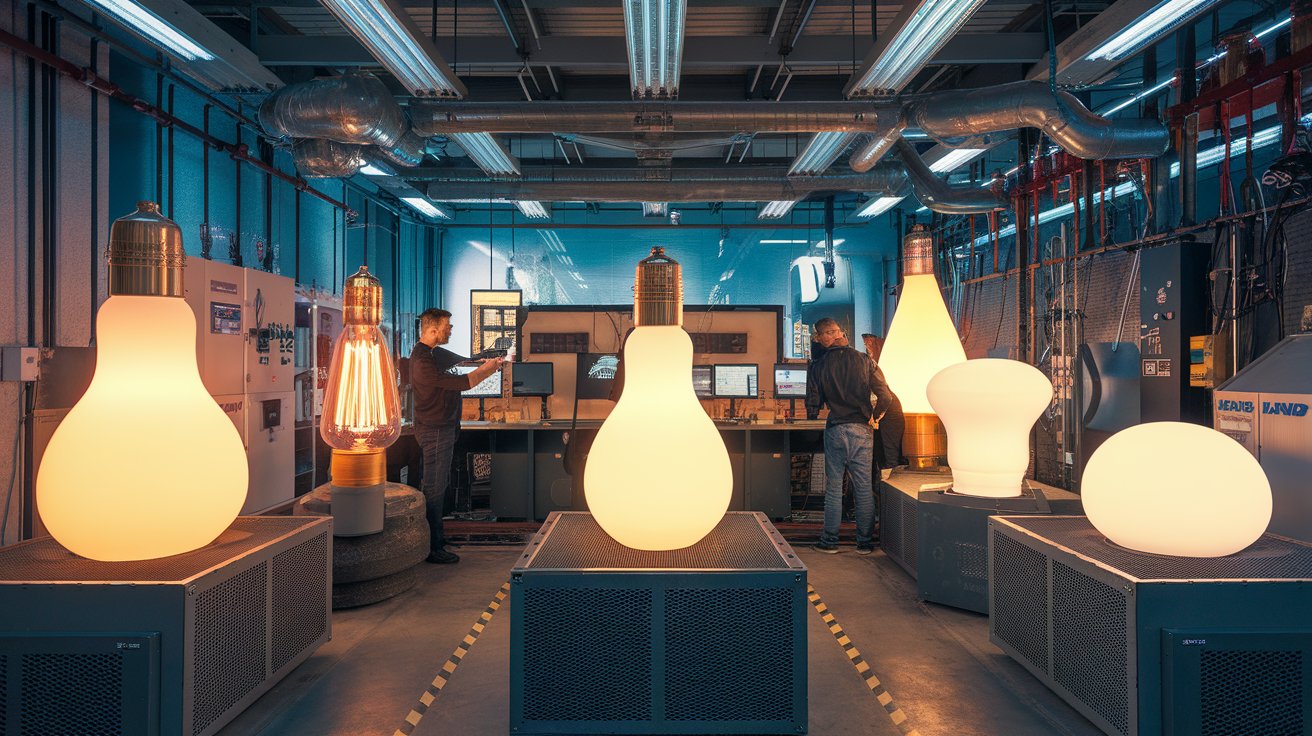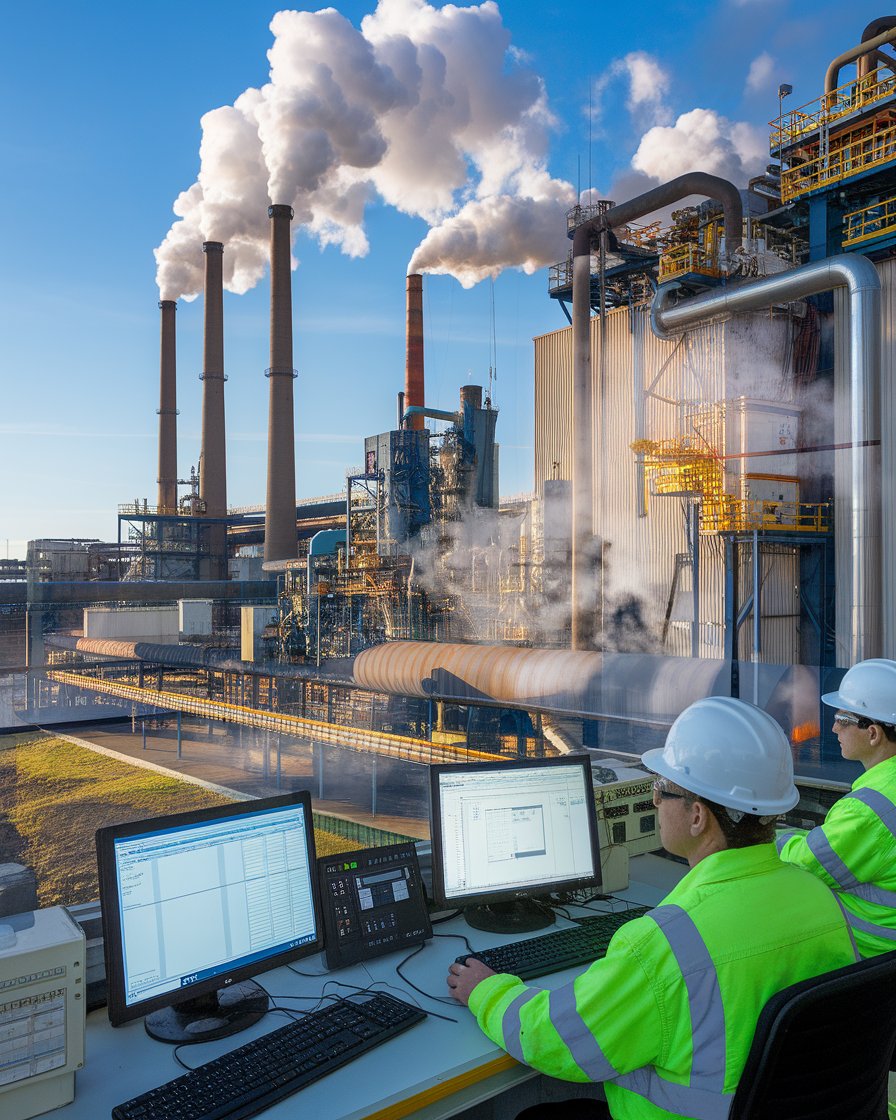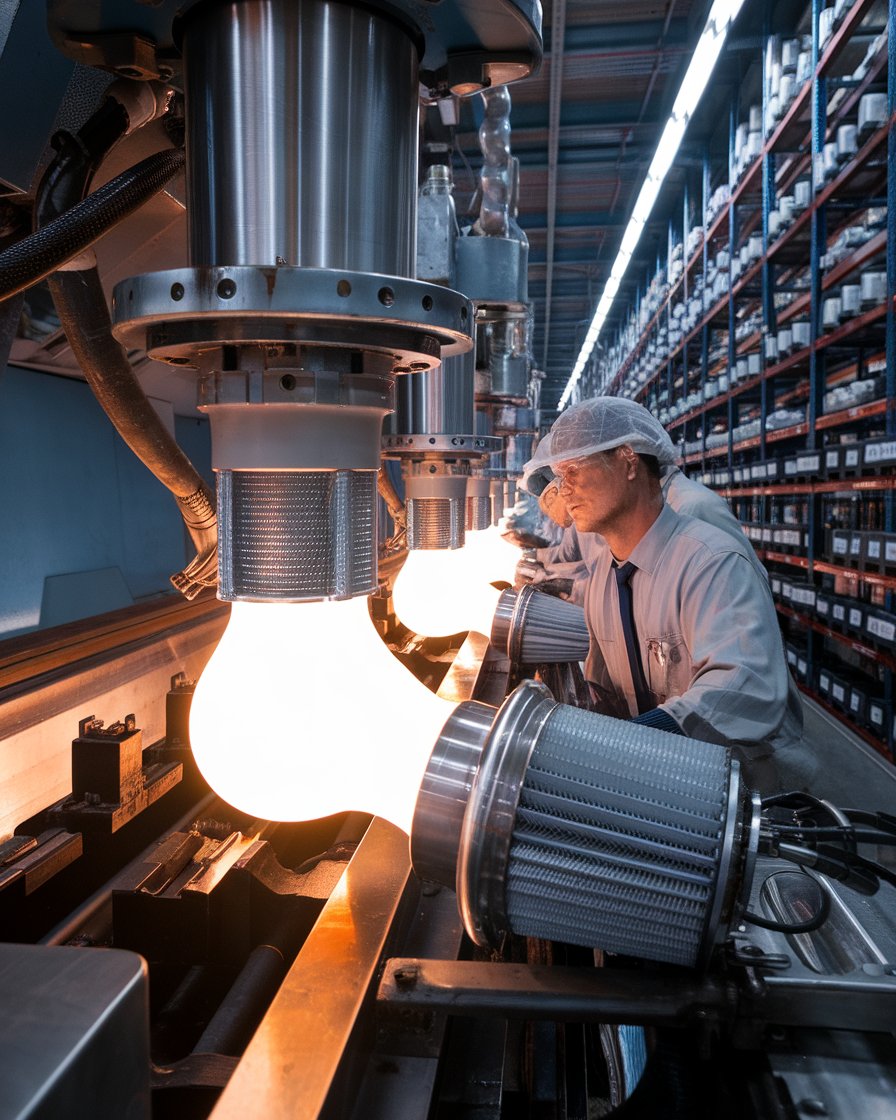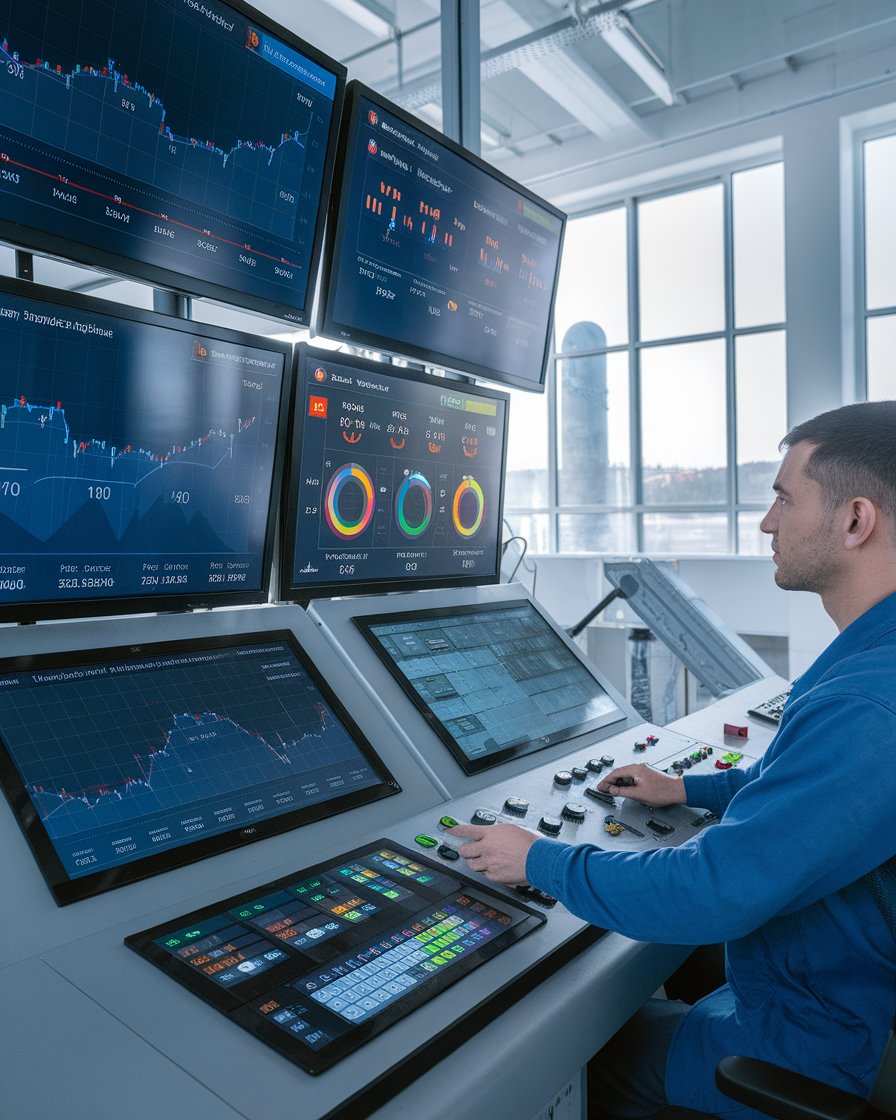Introduction
Emission control systems play a vital role in reducing harmful pollutants released from power plants and other industrial processes. By utilizing advanced control technologies, such as catalytic converters and purification systems, these systems work to filter out contaminants like nitrogen oxides, CO2, and sulfur. They also enhance air quality by controlling the amount of smog and particulate matter emitted. Manufacturers use a range of emission control methods, including ceramic filters and computer-controlled fuel-injection systems, to ensure efficient pollution reduction while maintaining thermal stability and energy efficiency in their systems.
In addition to filtering pollutants, these systems are designed to manage excess heat and improve ventilation, helping industries optimize heat transfer and reduce their overall environmental impact. Emission control systems are used in both natural gas and chemical process industries, with auxiliary technologies ensuring that even the smallest pollutants are effectively removed. As air pollution control systems evolve, the integration of new methods continues to provide solutions to growing environmental challenges.
Key Takeaways
- Emission control systems effectively reduce harmful gases like nitrogen oxides, sulfur, and CO2, improving air quality and meeting emission standards.
- Catalytic converters are vital for turning pollutants like carbon monoxide and nitrogen oxides into less harmful substances.
- Advanced monitoring systems track and adjust pollution levels in real-time, ensuring emission control systems work efficiently.
- Emission control technologies such as catalytic converters and thermal oxidation enhance combustion processes while minimizing pollutants.
- Selective Catalytic Reduction (SCR) reduces nitrogen oxides in high-temperature environments, meeting strict emission regulations.
- Process control systems optimize waste heat recovery and reduce pollutants, contributing to energy efficiency and lower operating costs.
How Emission Control Systems Work to Reduce Air Pollution
Emission control systems are critical in reducing air pollution by limiting the harmful gases produced during combustion. These systems filter out pollutants such as nitrogen oxides, sulfur, and particulate matter. A well-designed emission control system employs control technologies that process exhaust gas through catalytic converters, which help reduce pollutants like carbon monoxide and unburned hydrocarbons. By focusing on emission control, manufacturers can meet stringent emission standards while also enhancing the energy efficiency of their systems. As a result, these systems significantly reduce the environmental impact of combustion processes.
Effective Strategies for Optimizing Emission Control Systems in Light Bulbs
1. Implementing Heat Management in Light Bulbs
Efficient heat management is crucial for optimizing emission control in light bulbs. By utilizing advanced heat sinks or thermally conductive materials, excess heat generated during the bulb’s operation is dissipated. This prevents overheating and ensures that the emission control system can function without disruption, thus improving the lifespan of the light bulb and minimizing the emission of pollutants.
2. Using Low-Emission Light Bulb Technologies
Adopting low-emission technologies like LED or compact fluorescent bulbs can significantly reduce the amount of harmful gases emitted during usage. These bulbs are designed to operate with lower energy consumption, reducing the production of pollutants such as nitrogen oxides and CO2. This contributes to a cleaner environment by lowering the demand on emission control systems.
3. Enhancing Airflow and Ventilation in Light Bulbs
Improving airflow around light bulbs, especially in enclosed fixtures, helps regulate temperature and reduces the need for extensive emission control measures. By incorporating ventilation or breathable designs, light bulbs can maintain optimal temperatures, preventing the build-up of excess heat and pollutants, leading to more energy-efficient operation.
4. Incorporating Advanced Catalytic Filters
Catalytic filters can be integrated into emission control systems for light bulbs to capture and neutralize harmful gases. These filters help convert pollutants like VOCs and nitrogen oxides into harmless substances, similar to how catalytic converters work in cars. This advanced filtration reduces the environmental impact of light bulbs, especially in high-use settings.
5. Monitoring Systems for Emission Control
Integrating advanced monitoring systems into the emission control of light bulbs allows for real-time tracking of temperature and pollutant levels. This enables immediate adjustments to reduce the release of harmful emissions, ensuring that the light bulb operates efficiently while meeting environmental standards.
The Importance of Catalytic Converters in Emission Control
Catalytic converters are essential in reducing emissions of harmful gases like carbon monoxide and nitrogen oxides from combustion engines. They work by facilitating chemical reactions that convert these pollutants into less harmful gases, such as carbon dioxide and nitrogen. By ensuring that the exhaust gas passes through a catalytic converter, manufacturers can reduce the levels of unburned hydrocarbons, sulfur, and nitrogen oxides. This not only improves air quality but also helps manufacturers comply with stringent emission control standards set by regulatory authorities.
Monitoring Systems for Efficient Emission Control
Advanced monitoring systems are integral to ensuring that emission control systems operate efficiently. These systems continuously track the levels of pollutants like VOCs and nitrogen oxides emitted during the combustion process. By providing real-time data, monitoring systems help operators make necessary adjustments to the emission control technologies in place. This ensures the emission control system remains efficient and capable of handling various combustion byproducts. Effective monitoring also reduces the chances of excess pollution and helps in maintaining optimal fuel efficiency.
Key Emission Control Technologies Used by System Manufacturers
Manufacturers of emission control systems rely on advanced technologies like catalytic converters and particulate filters to limit harmful emissions. These systems are designed to reduce pollutants from exhaust gas, ensuring that air quality standards are met. System manufacturers continuously innovate with technologies that filter and purify exhaust gases, including techniques like thermal oxidation. This allows for more efficient combustion while controlling the levels of nitrogen oxides and volatile organic compounds (VOCs). The incorporation of these emission control technologies helps meet both regulatory requirements and industry standards.
Case Study: Innovations in Emission Control Technologies for Industrial Light Bulbs
A major manufacturer of industrial light bulbs, EcoLight Solutions, recently implemented advanced emission control technologies to address the environmental challenges of their high-temperature lighting systems. The company integrated catalytic oxidation technologies to break down volatile organic compounds (VOCs) and harmful nitrogen oxides (NOx) emitted during the production and operation of their bulbs. By using thermal oxidation combined with particulate filters, the manufacturer was able to reduce pollutant emissions by 40%.
To further enhance their emission control efforts, EcoLight Solutions adopted Selective Catalytic Reduction (SCR) technology. This allowed them to control NOx emissions more efficiently, ensuring compliance with stringent environmental regulations. The combination of these technologies not only minimized air pollution but also improved the energy efficiency of their bulbs, lowering overall operational costs. This case highlights how manufacturers can leverage advanced emission control systems to meet regulatory standards while reducing environmental impact and energy consumption.
Thermal and Catalytic Oxidation Technologies
Thermal and catalytic oxidation technologies play a crucial role in controlling emissions from industrial processes. These technologies work by breaking down pollutants, such as VOCs, at high temperatures, converting them into less harmful substances like carbon dioxide. Catalytic oxidation lowers the temperature required for these reactions to occur, making the process more energy-efficient. Emission control system manufacturers often integrate these technologies to ensure compliance with environmental standards while reducing energy consumption during the pollution control process.
Selective Catalytic Reduction for Nitrogen Oxide Control
Selective Catalytic Reduction (SCR) is widely used to reduce nitrogen oxides (NOx) emissions from industrial exhaust gases. This technology injects ammonia into the exhaust stream, which reacts with NOx to form nitrogen and water, thereby significantly lowering emissions. SCR systems are favored by manufacturers for their ability to control NOx emissions effectively, even in high-temperature environments. By incorporating SCR technology, manufacturers can meet strict emission regulations while maintaining the efficiency of their combustion processes.
The Role of Process Control in Emission Control Systems
Process control plays a vital role in the efficiency of emission control systems by optimizing how pollutants are managed. Using computer-controlled fuel injection systems, emission levels can be closely monitored, allowing for real-time adjustments that minimize harmful gas output. Process control technologies ensure the system operates at optimal conditions, effectively controlling the temperature and exhaust flow. This continuous monitoring also helps improve the heat exchange process, ensuring waste heat is recovered and used efficiently, leading to lower operating costs and better compliance with emission standards.
Real-Time Adjustments in Process Control Systems
Process control systems that make real-time adjustments to the combustion process help maintain emission levels within acceptable limits. These systems use sensors to measure exhaust gas temperature, fuel-to-air ratios, and pollutant concentrations. By making real-time adjustments, process control systems can reduce fuel consumption and minimize the emission of pollutants like carbon monoxide and unburned hydrocarbons. This not only helps in controlling emissions but also improves the overall performance and energy efficiency of the emission control system.
Heat Recovery and Waste Gas Management
Heat recovery is an important aspect of process control in emission control systems. By capturing and reusing waste heat from exhaust gases, these systems can improve energy efficiency and reduce operating costs. Waste gas management techniques, such as filtering and purifying the exhaust, further enhance the effectiveness of the emission control system. Process control systems that incorporate heat recovery and waste gas management contribute to a more sustainable and cost-effective approach to managing emissions from industrial and combustion processes.
“The environment is where we all meet; where we all have a mutual interest; it is the one thing all of us share.” – Lady Bird Johnson
How to Integrate Emission Control Chapters and Articles into Efficient Systems
A wide range of chapters and articles provides critical insights into emission control systems and their best practices. These resources discuss the technologies and control systems that are designed to reduce pollutants and optimize performance. By studying chapters on emission control technologies, manufacturers can stay up-to-date with the latest techniques to manage emissions, making their systems more efficient. The articles also cover essential topics such as waste heat recovery and pollution control equipment, helping manufacturers improve their system designs to meet environmental regulations and enhance overall system efficiency.
Key Insights from Emission Control Chapters and Articles
Chapters and articles on emission control technologies offer valuable insights into best practices and emerging trends in the industry. These resources cover a wide range of topics, including advancements in catalytic oxidation, VOC control, and heat exchange systems. By staying informed on these developments, manufacturers can improve their system designs to be more efficient and compliant with emission standards. Understanding the key takeaways from these resources can significantly enhance the performance of emission control systems.
Integrating New Technologies from Research Articles
Research articles often introduce new technologies and methods for improving emission control systems. Innovations like advanced catalytic converters, selective catalytic reduction systems, and improved process control techniques can all contribute to more efficient and reliable systems. By integrating the latest findings from research into their designs, manufacturers can reduce emissions and operating costs while improving overall system performance. Continuous learning from scientific chapters and research articles ensures that emission control systems remain at the forefront of environmental protection efforts.
Conclusion
Emission control systems are crucial for reducing harmful pollutants like VOC emission and carbon dioxide, ensuring that industrial processes minimize their environmental impact. These systems, whether in fuel systems or air pollution control technologies, help manage pollutants and optimize energy use by controlling factors like air temperature and reducing the amount of heat emitted. The integration of catalytic converters, valves, and thermally efficient designs enhances their ability to remove contaminants and maintain a cleaner ambient environment.
As industries continue to evolve, staying updated with innovations found in resources like ScienceDirect topics is essential. Advanced systems are also designed to handle increases in temperature and fluctuations, ensuring pollutants like oxides of nitrogen and sulfur are effectively reduced. By incorporating such solutions, industries not only meet regulatory standards but also contribute to long-term sustainability, adapting to changes and moving forward with newer, more efficient methods for emission control.













